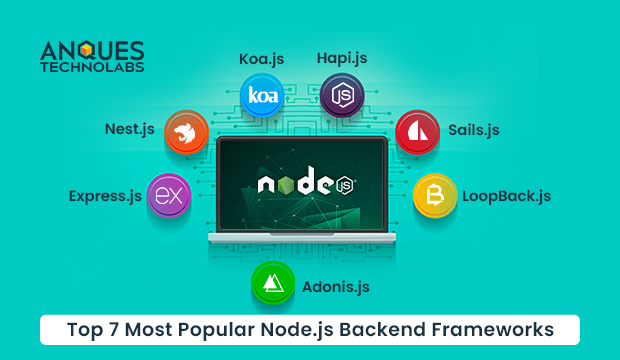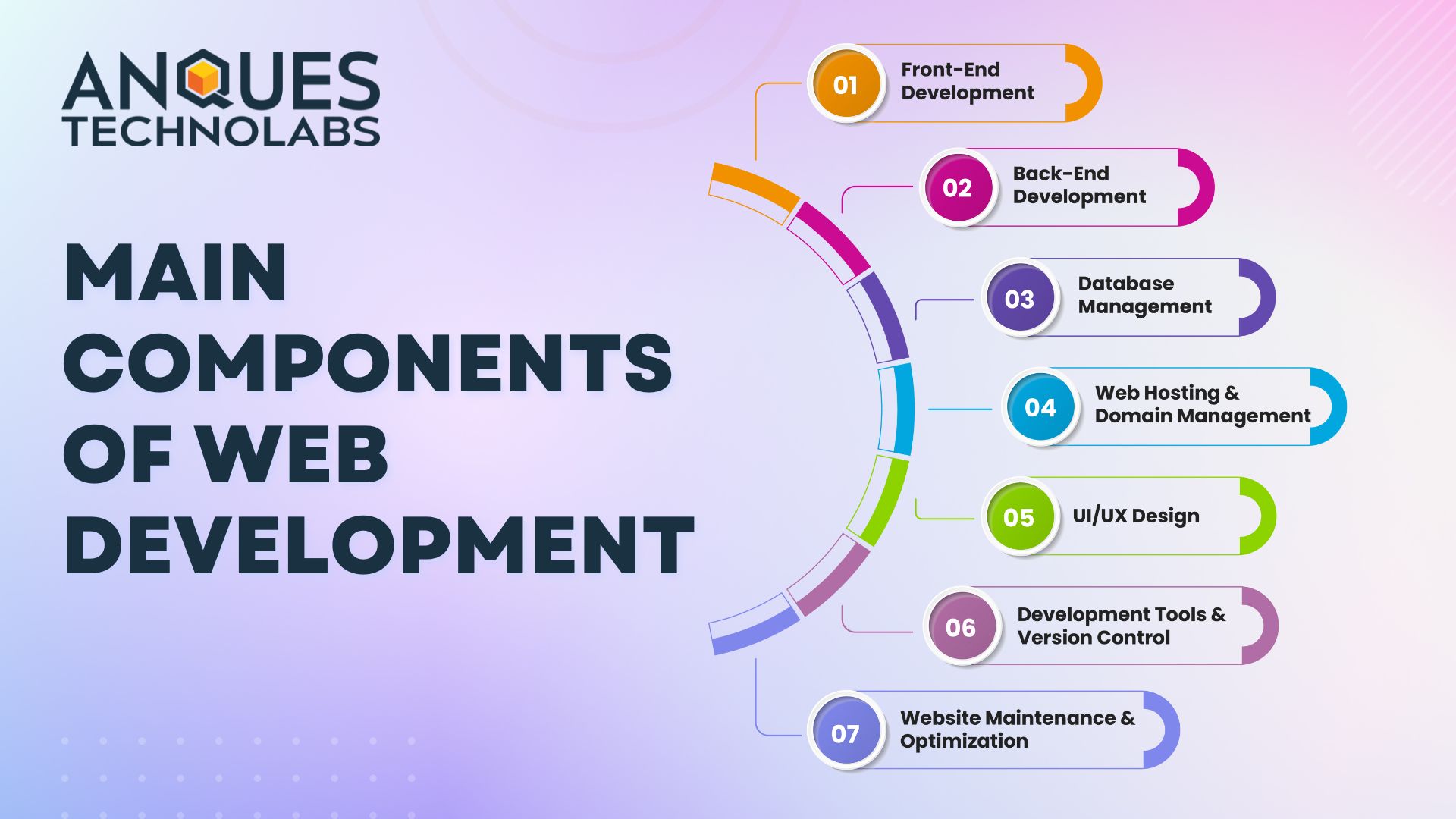Introduction
Node.js is an open-source platform that allows developers to build server-side applications using JavaScript. It has transformed Node.js backend frameworks by enabling developers to use the same language, JavaScript, for both the front-end and back-end. This is especially useful for applications that need to handle real-time or data-heavy tasks. Many businesses turn to a Node.js development company to create fast, scalable, and efficient applications customized to meet their specific needs.
Why Choose Node.js for Backend Development?
Node.js is a popular choice for backend development because it lets developers use JavaScript for both the front-end and back-end, making development easier and faster. This makes development faster and simpler, as there’s no need to learn multiple programming languages. Node.js is known for its speed and efficiency, especially when handling many requests at once. It uses an asynchronous, non-blocking model, meaning it can process multiple tasks at the same time without slowing down. This makes Node.js backend frameworks ideal for building real-time applications like chat apps, live data streaming platforms, or gaming servers.
It’s perfect for real-time applications like chat apps, live data streaming, or gaming servers, as it can quickly handle many connections. Node.js technology also has a vast library of tools and modules through npm (Node Package Manager), which speeds up development by providing ready-to-use solutions. Additionally, Urgent hiring Node.js in Anques Technolabs news highlights the increasing demand for skilled Node.js developers. As businesses look to create fast, scalable, and real-time applications, the need for experienced developers has never been greater.
Benefits of Using Node.js for Backends:
- Scalability: Designed for handling multiple connections and processes concurrently.
- Efficiency: Non-blocking I/O operations reduce the load on servers and accelerate performance.
- Large Community and Support: Continuous updates and a strong developer community.
Key Criteria for Choosing a Node.js Framework
- Project requirements: E-commerce, API, or real-time applications.
- Ease of use and learning curve: Refer to how simple the documentation is and how easy it is to understand and get started with the framework.
- Community and Support: Frequent updates, active community, and third-party support.
- Scalability: Ability to handle future growth.
Top 7 Most Popular Node.js Backend Frameworks
1. Express.js
Express.js is the most popular Node.js framework, known for being simple, lightweight, and flexible, making it easy to build web applications and APIs. It provides a thin layer of fundamental web application features without dictating a specific structure or tools, making it adaptable to any type of project.
Key Features:
- Middleware support for handling HTTP requests.
- Compatible with REST API development.
- Extensive third-party plugins and packages.
Why Use Express.js: If you’re building a straightforward web server or REST API, Express.js is lightweight and performs exceptionally well with minimal setup.
2. Nest.js
Nest.js is an advanced Node.js framework built with TypeScript, designed to help developers create efficient and scalable server-side applications. It emphasizes scalability and modern development principles, especially for enterprise-grade applications.
Key Features:
- TypeScript support, improving code quality.
- Modular architecture for better code organization.
- Built-in dependency injection.
Why Use Nest.js: Ideal for large-scale applications requiring a well-structured and scalable codebase.
3. Koa.js
Koa.js, created by the same team behind Express.js, offers a more powerful and flexible foundation for building web applications and APIs. It’s designed to be more expressive and efficient.
Key Features:
- Lightweight and minimal, without any middleware built-in.
- Supports async functions, simplifying error handling.
- Improved modularity.
Why Use Koa.js: Excellent for developers who need a lightweight and customizable framework for API development.
4. Hapi.js
Hapi.js is known for its strong plugin system and configuration-centric approach. Originally developed by Walmart Labs, Hapi.js is favored for creating secure, scalable applications.
Key Features:
- Rich plugin-based architecture.
- Built-in input validation, caching, and authentication.
- Focus on configuration over code.
Why Use Hapi.js: Excellent for enterprise applications requiring robust, secure, and maintainable code.
5. Sails.js
Sails.js is inspired by the MVC pattern and is built with data-driven API applications in mind. It is compatible with most databases and integrates easily with other tools.
Key Features:
- MVC structure for organizing large applications.
- Supports RESTful APIs and WebSockets.
- Auto-generate API blueprints based on your database.
Why Use Sails.js: Ideal for data-heavy applications and applications where you want a convention-over-configuration approach.
6. LoopBack.js
LoopBack.js is an open-source framework designed to help connect applications with backend data sources, making it easier to manage and access data. It is well-suited for building REST APIs and connecting different services and databases.
Key Features:
- Built-in API Explorer for testing APIs.
- Data integration and model-driven API support.
- Compatible with multiple databases, including MySQL, Oracle, and MongoDB.
Why Use LoopBack.js: It offers tools for connecting to databases, creating models, and defining relations, making it ideal for developing scalable, enterprise-level applications.
7. Adonis.js
Adonis.js is a full-fledged MVC framework for Node.js that brings the ease of development from Laravel in the JavaScript ecosystem. Its focus is on rapid development with a simple, stable API.
Key Features:
- ORM support through Lucid ORM.
- Built-in authentication and authorization.
- Modular structure.
Why Use Adonis.js: Because easy-to-use framework with built-in features like authentication, routing, and database management, making it perfect for building secure, maintainable web applications quickly and efficiently.
Read more: Dedicated Developers vs. Freelancers
Comparing Popular Node.js Frameworks
Each of these frameworks serves distinct purposes. For instance, Express.js offers simplicity and minimalism, whereas Nest.js provides structure and scalability. While Meteor.js targets full-stack, real-time applications, LoopBack.js specializes in connecting APIs to databases. Choosing the best one depends on your project requirements, team expertise, and the specific features each framework brings to the table.
Benefits of Using Node.js Frameworks
- Faster Development: Node.js frameworks provide pre-built tools, so developers can work faster without building everything from scratch.
- Scalability: These frameworks can handle many users and large amounts of data, making them ideal for growing applications.
- Real-Time Data: Node.js is great for apps that need real-time updates, like chat apps, because it can handle many requests at once.
- Cross-Platform: With Node.js, developers can create apps that work on different devices, like phones and desktops, more easily.
Drawbacks of Node.js Frameworks
Here are the drawbacks of Node.js frameworks in simple terms:
- Single-Threaded: Node.js uses only one thread, which can slow down when handling tasks that need a lot of processing power.
- Callback Problems: Node.js often uses callbacks, which can make the code messy and harder to manage in larger projects.
- Not Ideal for CPU-Intensive Apps: Node.js is better for I/O-heavy tasks, but it may not be the best choice for apps that need a lot of CPU power.
- Limited Built-in Features: Some Node.js frameworks have fewer built-in features compared to other frameworks, so developers may need to use more external tools or write additional code.
When to Choose Each Framework?
For small projects, Express.js or Koa.js are great because they are simple and easy to use. For big, complex projects, Nest.js or Hapi.js are better because they are more powerful and built for larger apps. If your app needs real-time features like chat or live updates, Feathers.js or Meteor.js are good options.
Future of Node.js in Backend Development
Node.js continues to grow, especially with the rise of microservices and serverless architecture. Its ability to handle real-time data, efficiency, and asynchronous capabilities makes it a strong choice for backend development. As Node.js evolves, we can expect to see even more robust frameworks emerge, pushing the boundaries of what JavaScript can achieve on the server side.
Conclusion
In conclusion, Node.js backend frameworks have revolutionized the way developers create scalable, high-performance web applications. Whether you’re building a simple API or a complex system, choosing the right framework can improve productivity and make maintenance easier. From the simple Express.js to the more feature-packed Total.js, each framework offers benefits suited to different development needs.
Dedicated NodeJs developers are valuable because they provide top-quality support after development, such as handling app updates, maintaining the application, and managing user feedback. They work closely with clients to create customized business applications that meet their specific needs.
FAQs
Which is the most popular backend framework?
The most popular backend framework is Node.js. It’s widely used due to its speed, scalability, and ability to handle real-time applications efficiently. With its large community and vast resources, it’s a top choice for developers worldwide.
Which is more used, NodeJS or Django?
Node.js is more commonly used for building scalable, real-time applications due to its speed and flexibility with JavaScript. Django, however, is preferred for rapid development in Python-based web applications, offering a robust framework with built-in features for security and efficiency.
What is the best REST API for NodeJS?
The best REST API for Node.js is Express.js. It’s lightweight, easy to use, and highly flexible, making it ideal for building fast and scalable RESTful APIs. Express simplifies routing and middleware management, helping developers create efficient APIs quickly.
Does NodeJS have a future?
Yes, Node.js has a bright future. Its popularity continues to grow due to its speed, scalability, and ability to handle real-time applications. With a large, active community and constant updates, Node.js remains a top choice for developers.
What is the best backend language?
The best backend language depends on your project needs. Node.js (JavaScript) is great for real-time apps, while Python (Django/Flask) is ideal for rapid development and AI tasks. Java and Ruby are strong for large, complex applications, offering scalability, security, and performance. Choose based on requirements.















